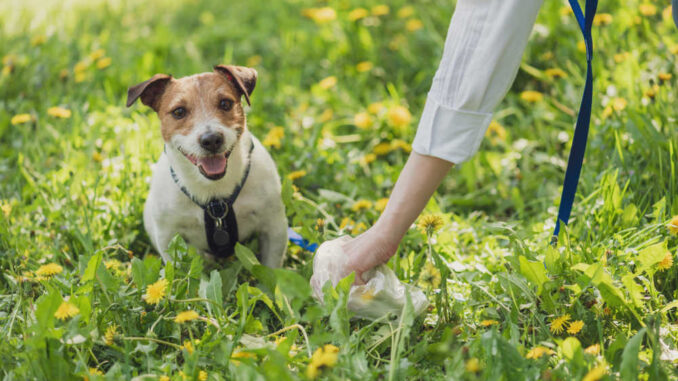
This article was updated on December 15th, 2023

Dog owners often ask us about the shiny, slimy, jelly-like material on their dog’s stools. This material is mucus, and it has an extremely important role to play in gut health. However, its presence can also indicate a need for medical attention.
In this article, we’ll provide several pictures to help you identify what may be going on with your furry friend. We will also share steps you can take to help your furry friend.
Example picture 1: white mucus
This sort of mucus can be compared to slime or snot, and may coat the outside of the stool, giving it a glossy appearance. It is often accompanied by loose or unformed stool.
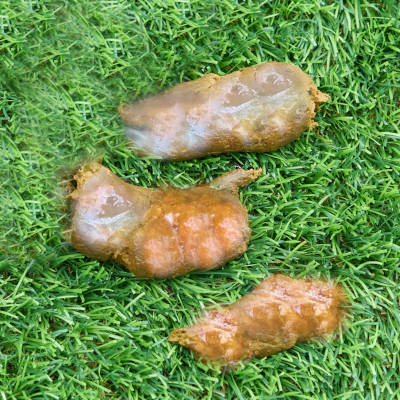
Unfortunately, mucus in the stool is not a very specific sign and tells us that the lower gut is inflamed, but not why! Potential causes for this color mucus include colitis (gut inflammation), food allergies, or Inflammatory Bowel Disease (IBD).
When is this type of mucus a concern?
1) If your dog appears to be defecating in a normal manner in terms of frequency, color, and volume of stools, it is likely that mucus in those stools is just the GI tract adjusting to slight changes in the body. It is not too concerning to have a small amount of mucus once in a while in the absence of any other changes.
2) If the mucus in the stools is very frequent or appears with other problems such as a soft, liquid, or extremely hard stool consistency, presence of blood, or increased frequency of defecation, there is likely an underlying medical condition that needs to be addressed.
It can help to offer your dog a bland diet of chicken and rice to settle the gut. It is also a good idea to start them on a probiotic anti-diarrhea paste.
View our vet-recommended Home Remedies to Help Your Dog with Mucus in Stools.
Example picture 2: yellow mucus / stool
Yellow mucus in a dog’s poop can result from changes in digestion due to liver problems. If ongoing and with other symptoms, discuss with your veterinarian. When the mucus is yellow, and the stool is yellow or white, we need to be looking at the liver or gallbladder as potential causes.
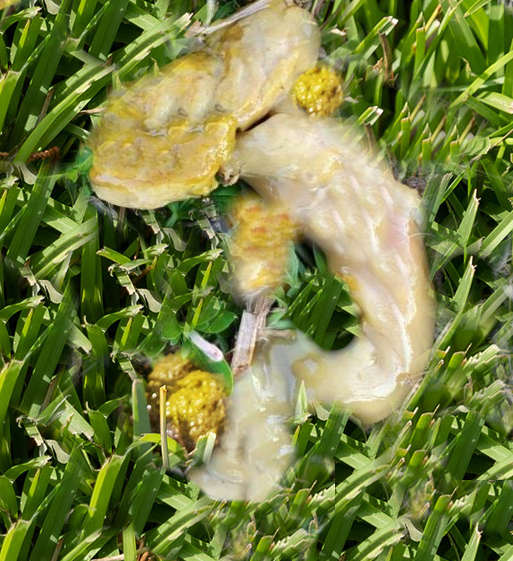
If the dog does have liver disease, we may notice other signs such as nausea, weight loss, and jaundice. This is something we should see the vet about right away, and they can get to the bottom of the issue by running some diagnostic tests such as a liver function blood test and an abdominal scan.
When exactly is this type of mucus a concern?
The presence of mucus in a small amount, for short periods of time, and without any other symptoms is not necessarily cause for concern. A veterinarian visit is recommended in the following situations:
- Frequent mucus in stools over several days
- Decrease in appetite or weight loss
- Decreased energy
- Frequent defecation
- Straining when defecating
- Occasional vomiting or other signs of illness
Learn more: Yellow Mucus In Dog Poop: Our Vet Shares What to Do
Example picture 3: Red or Bloody Mucus
Red is often present with a large amount of mucus, as seen in the pictures below.
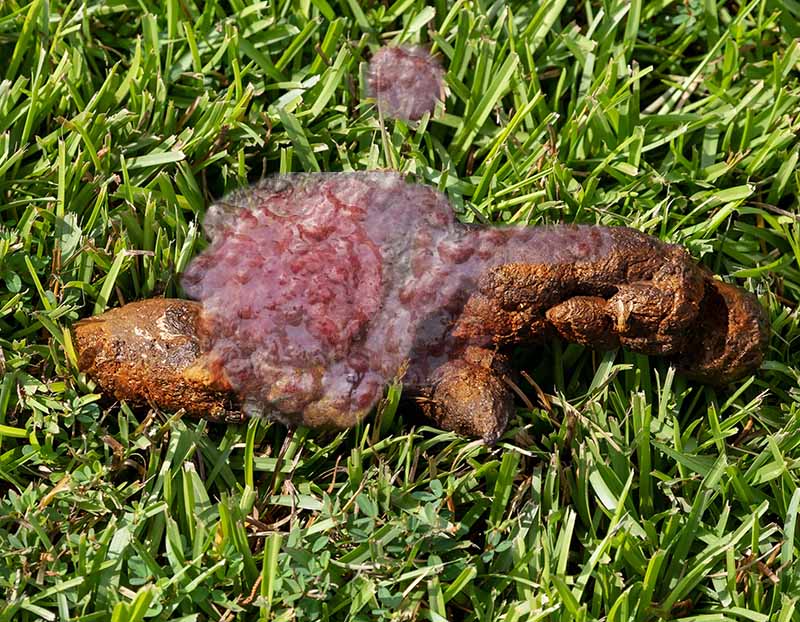

This often means that there is inflammation in the large intestine due to reasons from stress to dietary indiscretion to parasitic or bacterial infections. A veterinary visit is recommended in this case.
Fresh red blood originates in the lower gut (colon), while black or tarry blood is from the stomach or small intestine. The blood turns a black color due to the blood being digested.
The presence of blood is a concern and warrants an urgent vet visit. In young puppies, particularly those who have not yet been vaccinated and de-wormed, this could be a sign of Parvovirus or hookworm.
Learn more about Blood & Mucus in Dog’s Poop.
Final words
Remember that the appearance of your dog’s stools is only one factor that your veterinarian may take into consideration. While these pictures of mucus may help you understand what might be going on with your dog, it is important to discuss your particular situation with your veterinarian.
Continue reading: Is Mucus in a Dog’s Poop a Problem? How to Help Your Dog
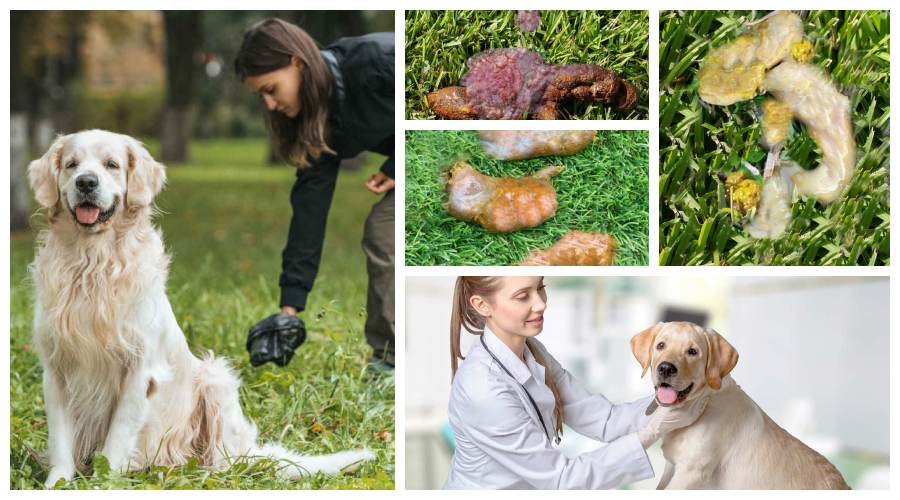
Related posts:
 Yellow Mucus In Dog Poop: A Vet Shares What to Do - Keeping an eye on your dog’s poop colors can be one of the most important things you do for their… [...]
Yellow Mucus In Dog Poop: A Vet Shares What to Do - Keeping an eye on your dog’s poop colors can be one of the most important things you do for their… [...] Is Mucus in a Dog’s Poop a Problem? How to Help Your Dog - Since we all have to pick up our dogs’ poop at one point or another, it’s likely fair to say… [...]
Is Mucus in a Dog’s Poop a Problem? How to Help Your Dog - Since we all have to pick up our dogs’ poop at one point or another, it’s likely fair to say… [...]Disclaimer: This website's content is not a substitute for veterinary care. Always consult with your veterinarian for healthcare decisions. Read More.


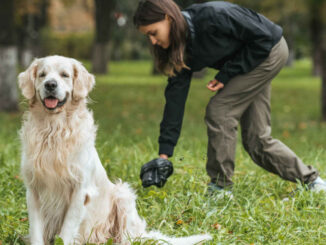
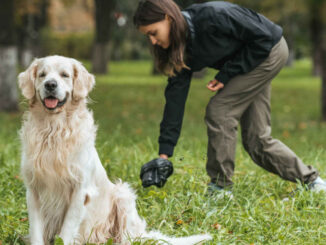
Be the first to comment